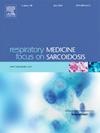评估小气道功能障碍的振荡衍生比率:新出现的指数。
IF 3.1
3区 医学
Q2 CARDIAC & CARDIOVASCULAR SYSTEMS
引用次数: 0
摘要
背景:肺功能参数比值的解释与基于人群的参考方程无关。本研究评估了用于识别基于z分数的小气道功能障碍的振荡衍生比率的诊断准确性和最佳截止值。方法:对2453例年龄在bb0 ~ 18岁的成人进行回顾性分析。使用Resmon™Pro FULL V3进行振荡测量。外围气道阻力比计算为(R5-19/R5) ×100,电抗比计算为(X5/AX) ×100。构建受试者工作特征(ROC)曲线,利用约登指数确定最佳截断值,评估外周气道阻力和电抗比的诊断准确性,z-score阈值为R5-19 >1.64和X5。结果:队列平均年龄为45.5±16.3岁,男性55.1%。ROC曲线分析显示,外周耐药的AUC为0.98 (95% CI, 0.98 ~ 0.99; p < 0.001)。最佳阻值为19.8%,敏感性为91.3%,特异性为95.6%,阳性预测值为97.3%,阴性预测值为86.5%。电抗比的AUC为0.91 (95% CI: 0.90 ~ 0.92; p < 0.001)。电抗比的最佳截止值为16.2%,敏感性为76.1%,特异性为94.7%,阳性预测值为96.7%,阴性预测值为66.3%。结论:本研究表明,振荡测量衍生的比率,特别是阻力比,是检测小气道功能障碍的可靠指标,独立于规范参考方程。本文章由计算机程序翻译,如有差异,请以英文原文为准。
Oscillometry-derived ratios for assessing small airway dysfunction: Emerging indices on the horizon
Background
Interpretation of the ratio of lung function parameters is independent of population-based reference equations. This study evaluated the diagnostic accuracy and optimal cut-off of oscillometry-derived ratios for identifying z-score–based small airway dysfunction.
Methods
Pre-bronchodilator oscillometry records of 2453 adults aged ≥18 years were retrospectively examined. Resmon™ Pro FULL V3 was used for oscillometry. Peripheral airway resistance ratios were calculated as (R5-19/R5) × 100, and reactance ratios were calculated as (X5/AX) × 100. Receiver operating characteristic (ROC) curves were constructed to evaluate the diagnostic accuracy of peripheral airway resistance and reactance ratios, using z-score thresholds of R5–19 > 1.64 and X5 < –1.64 as reference standards. Optimal cutoffs were identified using Youden’s index.
Results
The mean age of the cohort was 45.5 ± 16.3 years, and 55.2 % were male. ROC curve analysis demonstrated that the AUC for peripheral resistance was 0.98 (95 % CI, 0.98–0.99; p < 0.001). The optimal cutoff value for the resistance ratio was 19.8 %, which yielded a sensitivity of 91.3 % and a specificity of 95.6 %, with corresponding positive and negative predictive values of 97.3 % and 86.5 %, respectively. The AUC of the reactance ratio was 0.91 (95 % CI: 0.90–0.92; p < 0.001). The optimal cutoff for the reactance ratio was 16.2%, with a sensitivity of 76.1%, a specificity of 94.7%, and positive and negative predictive values of 96.7% and 66.3%, respectively.
Conclusions
This study suggests that oscillometry-derived ratios, particularly the resistance ratio, are reliable markers for detecting small airway dysfunction, independent of normative reference equations.
求助全文
通过发布文献求助,成功后即可免费获取论文全文。
去求助
来源期刊

Respiratory medicine
医学-呼吸系统
CiteScore
7.50
自引率
0.00%
发文量
199
审稿时长
38 days
期刊介绍:
Respiratory Medicine is an internationally-renowned journal devoted to the rapid publication of clinically-relevant respiratory medicine research. It combines cutting-edge original research with state-of-the-art reviews dealing with all aspects of respiratory diseases and therapeutic interventions. Topics include adult and paediatric medicine, epidemiology, immunology and cell biology, physiology, occupational disorders, and the role of allergens and pollutants.
Respiratory Medicine is increasingly the journal of choice for publication of phased trial work, commenting on effectiveness, dosage and methods of action.
 求助内容:
求助内容: 应助结果提醒方式:
应助结果提醒方式:


